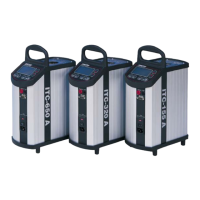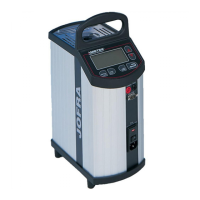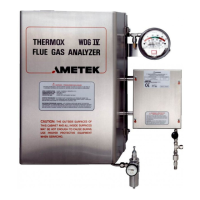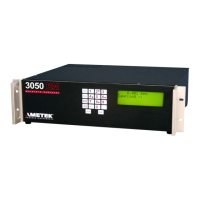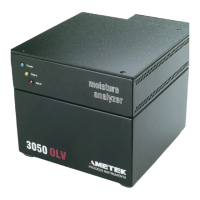Essential Health & Safety Requirements | 51
NOTE
Valve closed) and then adjusting the Aspirator Pressure Regulator with
the Drive Air Isolation Valve open to obtain a pressure of 5–10 mmHg
(0.20–0.39 inHg or 0.10–0.20 psi) less than the value obtained with the
valve closed. View the Measuring Cell pressure (Cell Pressure) from the
STATUS screen.
Applications Without an Aspirator:
If an Aspirator is not used, a Metering Valve or Ball Valve will be used to
adjust and control the sample flow through the system. Refer to customer-
specific drawings for appropriate settings for your application. View the
flow indicator, if used.
Setting Sample Response Time
Sample response time can also be used as a parameter for setting the As-
pirator Pressure. Response time is determined by switching the analyzer
from Zero Gas Flush mode to Measure mode and recording the time it
takes the analyzer to display the first reading after the switch.
To check the sample response time:
1. Observe the output concentration from the HOME screen.
2. Press the SETUP soft key to display the SETUP menu and then press
the DOWN arrow key until the Calibration sub-menu item is displayed
and selected.
3. Manually zero the analyzer. To do this, press ENTER to display the
Calibration screen. Use the DOWN arrow key to select Start zero
calibration and press ENTER. The message “Please wait ...” will appear
while the analyzer initializes and performs the calibration function.
Run the manual zero for 10 minutes. For more information about set-
ting the Zero fluid flow rate, refer to “Adjusting the Zero/Span Fluid
Flow Rate” in this chapter.
4. From the Calibration screen, select Start measure and press ENTER to
return the analyzer to Measure mode.
5. Press the HOME soft key to return to the HOME screen and observe
the analyte output concentration(s) again.
If the sample response time is adequate (first response after a Zero is
less than 30 seconds to T90), no further adjustment is necessary.
The sample response time may vary, depending on Sample Line
length.
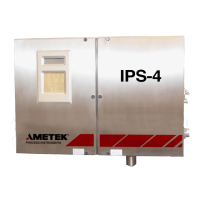
